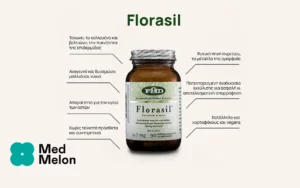Scientific Names of Tea Tree:
Melaleuca alternifolia Maiden [Fam. Myrtaceae]
Forms:
Volatile oil extract of the leaves of Melaleuca alternifolia Maiden
Traditional Usage:
– Aching Muscles
– Antibacterial
– Antifungal
– Antiseptic
– Antiviral
– Athlete’s Foot
– Dandruff
– Earache
– Fungal Infections
– Gingivitis
– Herpes Simplex Virus
– Insect Bites
– Itching and Inflammation
– Minor Wounds and Abrasions
– Rheumatism
– Scabies
– Sores
– Sprains
– Vaginitis
– Wounds
Overview:
Tea tree, Melaleuca alternifolia Maiden [Fam. Myrtaceae], is native to New South Wales, Australia where it can be found in swamps and other wetlands. It has been used by aboriginal peoples for centuries, but came to be known as tea tree in the late 1700s by British explorer James Cook who gave the tea to his men to prevent scurvy. Studies began in Australia in the 1920s that revealed the oil’s anti-bacterial and antiseptic properties. It has also been proven as an anti-fungal and germicide. Traditionally tea tree oil has been used as a topical to treat a variety of skin, joint, and muscle conditions including acne, athlete’s foot, boils and burns, insect bites, lice, scabies, body and foot odour, vaginal infections, sinus congestion, hemorrhoids, ring worm, mouth and throat infections, herpes, warts, sprains, rheumatism, and sore muscles. It can also be found in a variety of household cleaners, cosmetics, toothpastes, shampoos, and soaps. A recent study evaluated the antiviral effect of Australian tea tree oil against herpes simplex virus. In order to determine the mode of antiviral action of the essential oil, cells were either pretreated before viral infection or viruses were incubated with tea tree oil before infection, during adsorption or after penetration into the host cells. Viral plaque formation was clearly reduced when herpes simplex virus was pretreated with the essential oil prior to adsorption. These results indicate that the essential oil affects the virus before or during adsorption, but not after penetration into the host cell. Thus tea tree oil is able to exert a direct antiviral effect on herpes simplex virus. Tea tree oil has also been shown to be suitable for the treatment of fungal skin and mucosal infections including nail-bed fungus, Onychomycosis, which is notably difficult and/or risky to treat with conventional drugs.
Active Ingredients:
The major compounds include several terpenes such as gamma-terpinene, p-cymene, 1,8-cineol and 1-terpinen-4-ol. The last two are used to establish the Australian Standard for oil of Melaleuca at 15% and 30%.
Suggested Amount:
For treating skin infections, boils, carbuncles, and wound infections, tea tree oil is normally applied full strength 2 or 3 times a day. Infections of the mucous membranes such as in the mouth and throat can be treated with water mixtures of tea tree oil or with tea used as a gargle. Internal use is not recommended. Mouthwash can be made by adding 30-40 drops of tea tree oil to one cup of water. Dilute with water if skin irritation develops. An antiseptic wash can be made to clean cuts and scrapes by adding 30-40 drops of essential oil to a cup of distilled, sterile or clean, filtered water or from an infusion of the tea tree leaves. This solution can also be applied with a poultice. Acne may be as effectively treated with a 5% tea tree oil gel. Alternatively, mix 1 ml or about 10 drops oil to 2 teaspoons (10ml) water or a combination of 1 tsp. rose water and 1 tsp. witch hazel. Swab on twice a day after cleaning and drying skin. For treating athlete’s foot, ringworm and bromhidrosis, an 8% cream or 40% solution of it is recommended to be applied daily. For treating nail-bed fungus, Onychomycosis, apply full strength oil twice daily over several months. Removing dead tissue as often as possible helps the process. To make a 1% solution, mix 1teaspoon (5ml) tea tree oil in 500ml or just over 2 cups of distilled water or other liquid base. Not only can this solution be used as a disinfecting wash, but also as a disinfecting room spray, especially helpful in hospitals or sick rooms. To make a 40% solution, mix 1 tsp. tea tree oil (5ml) to Ύ cup plus 1 tablespoon distilled water or water/alcohol base. Other suitable liquids are rose water and witch hazel. Discontinue use if condition worsens. Tea tree oil should not be used over long periods of time.
Drug Interactions:
None known.
Contraindications:
Do not use if you are pregnant or nursing.
Side Effects:
Do not ingest. Skin rash or irritation has been reported in sensitive people. The FDA has not evaluated tea tree oil for effectiveness or safety. The oil is said to mix well with the natural skin oils allowing it to penetrate fairly deeply and reputedly does not cause damage to broken skin. If skin irritation does develop, the oil should be diluted with water, vitamin E or evening primrose oil or discontinued.
References:
D’Auria FD, Laino L, Strippoli V, Tecca M, Salvatore G, Battinelli L, Mazzanti G.
2001. In vitro activity of tea tree oil against Candida albicans mycelial conversion and other pathogenic fungi. J Chemother 2001 Aug; 13(4): 377-83
Duke, J. 1997: The Green Pharmacy, The Ultimate Compendium of Natural Remedies from the World’s Foremost Authority on Healing and Herbs. Rodale Press. Pp. 12; 85; 191; 219; 247-48; 265-66; 463; 488; 536; 184-85.
Gustafson JE, Cox SD, Liew YC, Wyllie SG, Warmington JR. 2001. The bacterial multiple antibiotic resistant (Mar) phenotype leads to increased tolerance to tea tree oil. Pathology 2001 May; 33(2): 211-5.
Hada T, Furuse S, Matsumoto Y, Hamashima H, Masuda K, Shiojima K, Arai T, Sasatsu M. 2001. Comparison of the effects in vitro of tea tree oil and plaunotol on methicillin-susceptible and methicillin-resistant strains of Staphylococcus aureus. Microbios 2001; 106 Suppl 2: 133-41
Schnitzler P, Schon K, Reichling J. 2001. Antiviral activity of Australian tea tree oil and eucalyptus oil against herpes simplex virus in cell culture. Pharmazie 2001 Apr; 56(4): 343-7.




